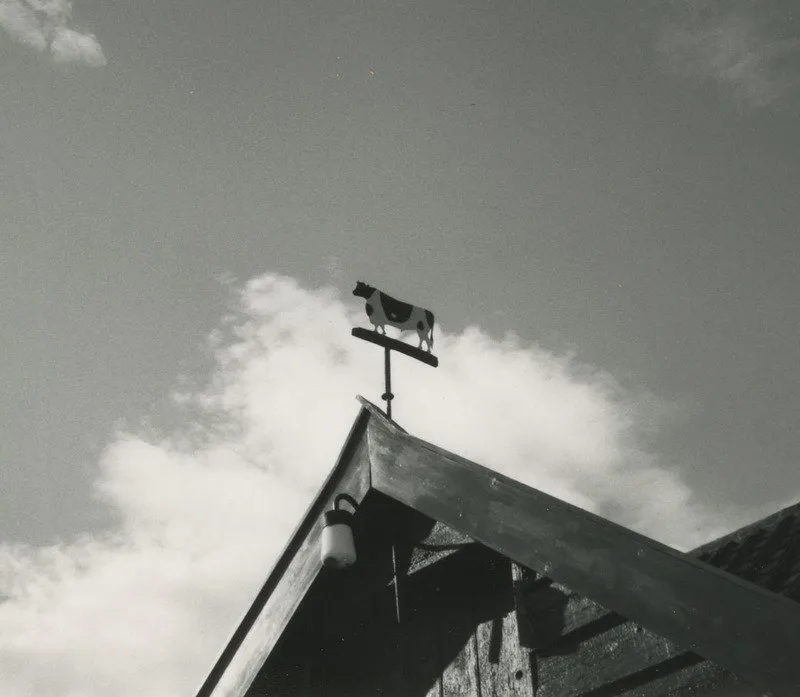
What happens when you travel to England after steemfest in Amsterdam? A lot. You realize how unbelievable it is that a 40-minute flight can take you to another country by a quick puddle jump across the North Sea. You also entertain some outlandish thoughts. Take these asylum signs at customs at Norwich International Airport.
I forgot all about requesting asylum. Hmm. I admit the thought came over me. In fact, it hit me hard as we waited to get our passports stamped.
Yes, I seek asylum. I want to stay here and not go back. The problem happens when you are a parent. There’s more than just my life at stake. I have to act in the best interests of my children.
I think their best interests mean living in England. But that’s not my call.
I lived in England during my junior year abroad in college where I attended the University of East Anglia in Norwich. When you are an American exchange student, the program looks for host families so you can have a homestay, a chance to live with a "real" English family for a couple of weeks in order to become acclimatized to the people and culture before you begin your course of study at the University.
As luck would have it, my homestay landed me right in the middle of a charmed life with my very own Lady Crawley in a village about 30 minutes east of Norwich. Another American named Sarah and I were originally meant to go live with family in a town called Wymondham (Windham, no “h” pronounced). The problem was they had been called out of the country last minute, and would her sister-in-law Margaret be willing to take in two homesick American girls for a few days until she returned home?
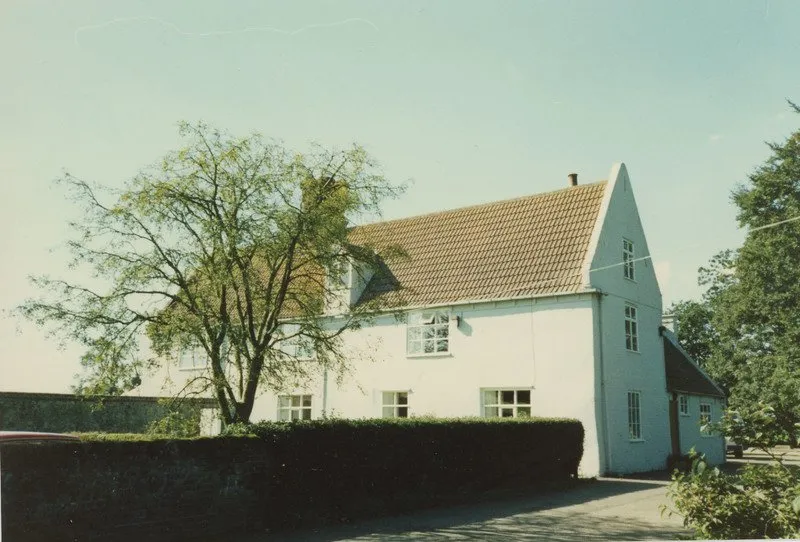
The farmhouse, built circa 1600.

From the pony field, looking back to the house.
Margaret Alston turned out to be a widowed English beyond English dairy farm owner (over 200 cows!) with two sons, Henry, 17, and Robert, 14. They were away at school during the week, so we had our run of her gorgeous farmhouse built in 1600. The hallways were crooked, floors creaked, and its walls oozed history from every corner.
When we met Margaret for the first time, Sarah and I were beyond intimidated. She had just returned home from a proper English wedding complete with a huge hat and posh accent. How was I to survive two weeks in this woman’s home without committing some major social gaffes and language atrocities that would instantly confirm my status as a barbaric American?
As it turned out, I rather enjoyed the essence of her English-ness. A court magistrate over in Great Yarmouth, Margaret was a formidable presence in her big English hats and proper English diction. And from her I learned many things. I learned you do not say “Margaret, you are wearing pants today” when your English host mother is dressed down in trousers, since she said with great conviction “I always wear pants.” How would I know pants were underwear? And would you know that saying you had to spend a penny meant you needed to pee?
(Apologies to all my English steemit friends, especially you, @opheliafu - please understand how unprepared I was to learn a new language!)
I also learned how exceptionally funny and dry the English can be. We spent hours discussing the ways the study abroad program warned us about UK natives, especially how we should expect to be dirty because the English don’t wash and prepare ourselves - we may be without showers. Margaret was horrified. I had never encountered anyone with a more spotless house. And she had plenty of bathrooms. But a bathroom is where you go for a bath. So remember to ask where the toilets are. To Americans, it sounds a bit crass. It’s hard to get used to asking about the location of toilets in any given place.
When our original host family returned from their holiday before the start of our fall term, neither Sarah nor I wanted to leave. We were settled in at Billockby Hall and I think Margaret enjoyed our company. This is how Margaret became my English mother. And over the years, we've kept in touch.
I give you this background so you have a little idea of how special this relationship is to me. As an only child who had never ventured far from home, I was apprehensive about leaving my school and friends to be gone for a year. I was lonely in Norwich. The dorms at UEA were like cold barracks. When I say cold barracks, I mean depressing as hell with cinderblock walls that could not even be disguised to look inviting.
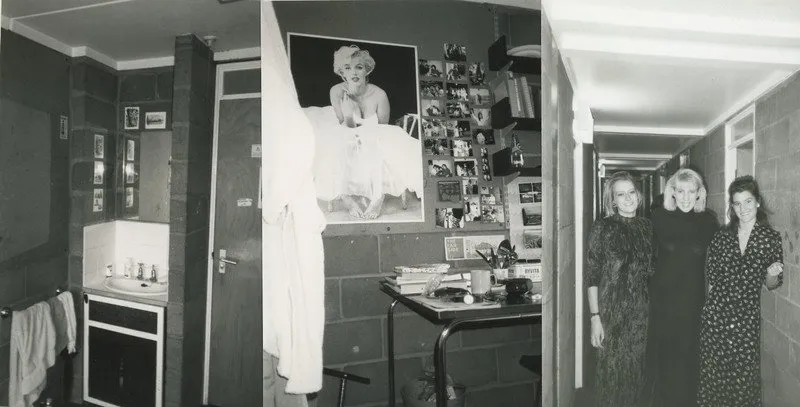
My cinderblock cell. Not even Marilyn could help. On the far right, me with two friends, late 1980s style.
We had sinks, but co-ed floors with toilets and showers down the hall. We also had a communal kitchen. I learned how to cook here. I owe much to my friend Valerie. She taught me how to make a roux; from there, anything is possible. And I taught my English floor-mates the joy of Toll House cookies minus the chocolate chips. They didn't have those over there. I used Cadbury buttons instead.
On weekends, I escaped to Margaret's house to recover from my egregious living conditions.
When Henry and Robert came home on the weekends, I felt like I was a part of a rambunctious family. Robert was more mischievous than his older brother Henry, who at 17 was at the age where I think he didn’t appreciate sharing his mother. Margaret’s husband had died of liver cancer five years before our arrival. Maybe Henry felt the need to be protective – I don’t know. He was much more aloof than his brother Robert. Robert’s idea of a good time was putting a whoopee cushion under the vicar’s chair cushion at Sunday dinner. So I knew we understood each other perfectly.
Sunday dinner at the Alston house was a grand affair at her table for 14 which always included a roast with delicious, crispy roasted potatoes, Yorkshire pudding and vegetables, all finished off with a homemade masterpiece dessert. That could be anything from trifle to apple crumble. And after the pudding, we had elaborate cheese platters to enjoy with such delicacies as Stilton, a variety of Cheddars, and soft cheeses with biscuits. It’s English, you know.
One got to me above all others. Margaret Alston’s apple crumble haunts me to this day. The ultimate comfort food, she would make me my own personal crumble and leave me home alone watching the telly if she ever had to go out in the evening. I felt so loved and cared for, and that was a nice feeling being so far away from home.
Recipe for Margaret's Apple Crumble:
6 oz cold butter cut into cubes (I prefer unsalted, but salted is fine)
3-4 oz plain sugar
5 oz white flour
* optional - a small pinch of salt if not using salted butter
Crumble this up with your fingers. It needn’t be too fine. Think of the texture of a crumb topping for a crumb cake.
5-6 apples – Granny Smith are a good choice.
Peel and core the apples and cut them up as if you were making a pie - not so much slices as chunks.
In a saucepan, put the apples with a bit of water. On low heat cook them down a bit until they are tender. You don’t want them too liquefied, just softened. You can add a little sugar to the cooking water, but I don’t. The water is mainly to keep them from sticking. Pour the apples into a casserole dish, and spread the crumble topping over them. Place in a 350-degree oven for about 30 minutes. The topping should not be at all browned. Serve with a pitcher of fresh cold cream. It does not have to be whipped, but that would also be divine.

If you need apples, go and shake out an apple tree.
Running a dairy farm, it astounded me that one never had to go out to buy milk. All you had to do was go collect a fresh pitcher from the barn and keep it in the fridge. This was fresh milk as close to the source as you could get, second only to drinking from the udder itself. The cream on the top was sublime!
This is a backstory for our visit back to Billockby last week – a trip I made with my own daughters immediately after steemfest. I had not been to visit for 20 years. Nothing had changed much. This house was still as wonderful as I remembered it.
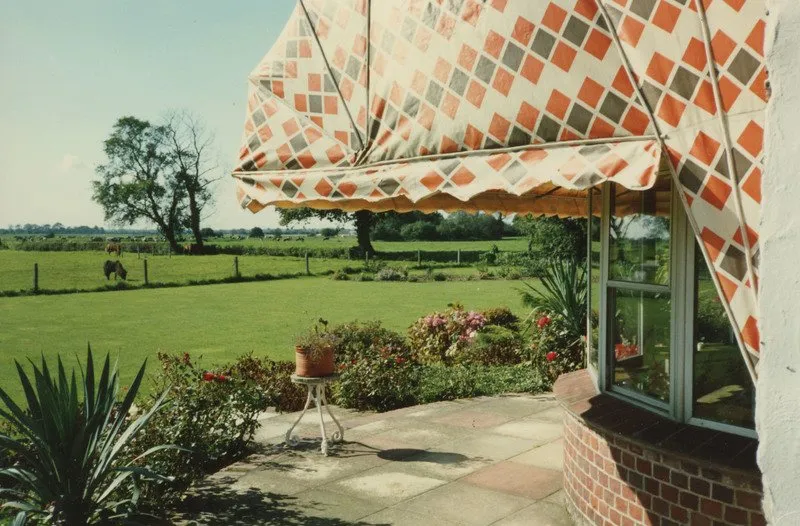
Standing just outside the living room, looking out at the pony field.
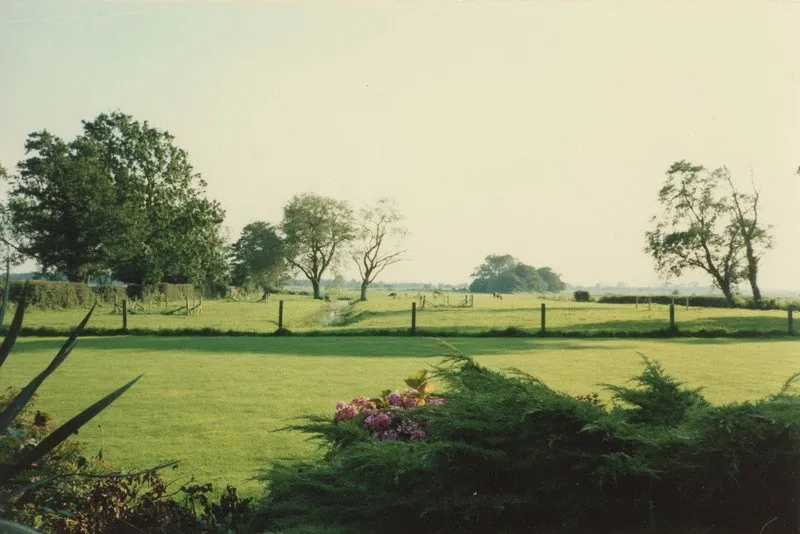
A view from the kitchen. I will put up a new photo in my next post showing the transformation of this garden view.
Even more so, because as a mother and homemaker I have a greater appreciation for interior design and aesthetic appeal. I realized that my experience with Margaret influenced my design taste more than I could have realized. All I need now is my very own ancient English cottage with some chintz, antiques, and a well worn farm table next to my AGA cooker with room for family and friends.
My wants are simple, after all.
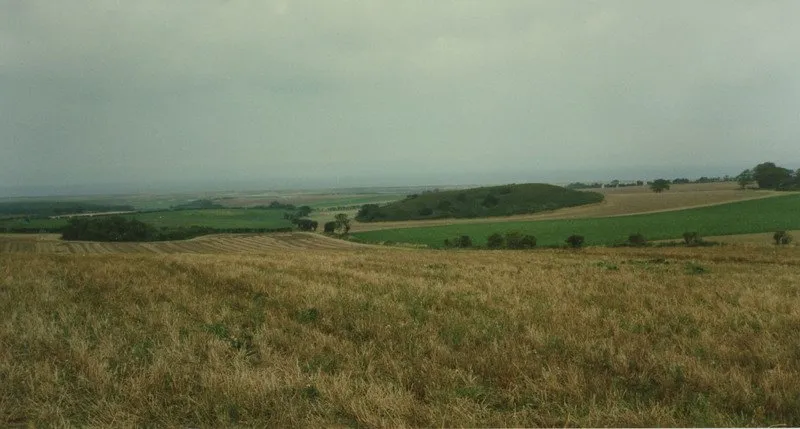
The Norfolk Broads on a fall weekend day, 1987, during a group pheasant hunt.
Illustration © Johanna Westerman from "Mother Holly," NorthSouth Books